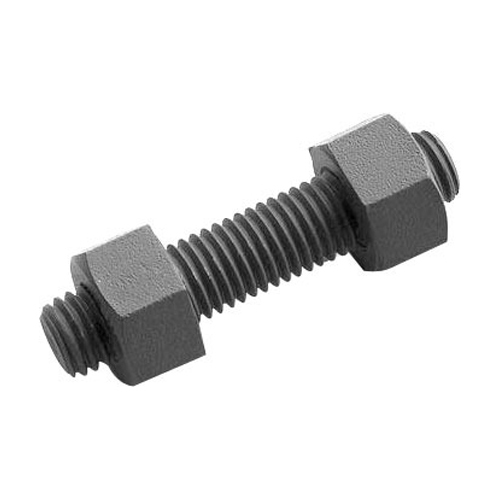What is a Stud Bolt?
What is a Stud Bolt?
In Petro & chemical industry for flange connections Stud Bolts are used. The Stud Bolt can be defined as a threaded rod with 2 heavy hexagon nuts. The number of bolts for a flange connection will be given by the number of bolt holes in a flange, diameter and length of bolts is totally dependent of flange type and Pressure Class of flange.
Stud Bolt length are defined in (American Society of Mechanical Engineers) ASME B16.5 standard. The length in inches is equal to the effective thread length measured parallel to the axis, from the first to the first thread without the chamfers points. First thread is described as the intersection of the major diameter of the thread with the base of the point.
 |
| Stud Bolt |
Threads of the Stud Bolts
Bolts threading are described in (American Society of Mechanical Engineers) ASME B1.1 Unified Inch Screw Threads, (UN and UNR Thread Form). The most common type of thread is a symmetrical form with a V-profile. The included angle is 60 degree. This form is commonly used in the Unified thread (UN, UNC, UNF, UNRC, UNRF) form as the ISO / metric threads.
The advantage of a symmetrical threads is that they are easier to produce and inspect as compared to the non-symmetrical threads. These are usually used in general purpose fasteners.
Thread sequence cover designations of diameter / pitch combinations that are measured by the number of threads per inch (TPI) applied to a single diameter.
 |
| Threaded Stud Bolt |
Materials for the Stud Bolts
Dimensions from Stud Bolts are described in the (American Society of Mechanical Engineers) ASME B16.5 standard. The material qualities for stud bolts are described in the different (American Society for Testing and Materials) ASTM standards, and are indicated by Grade. Commonly used grades are A193 for thread rods and A194 for the nuts.
American Society for Testing and Materials (ASTM) A193 covers a group of alloy and stainless steel bolting material for pressure vessels, Valves, flanges, and fittings for high temperature or high pressure service, or other special purpose applications.
American Society for Testing and Materials (ASTM) A194 covers a group of carbon, alloy, and martensitic and austenitic stainless steel nuts. These nuts are meant for high pressure or high temperature service, or both.
 |
| Stud Bolts |
Marking of Stud Bolts
Thread rods and nuts should be marked by the manufacturer with a unique identifier to identify the manufacturer or private label distributor, as appropriate.




Comments
Post a Comment